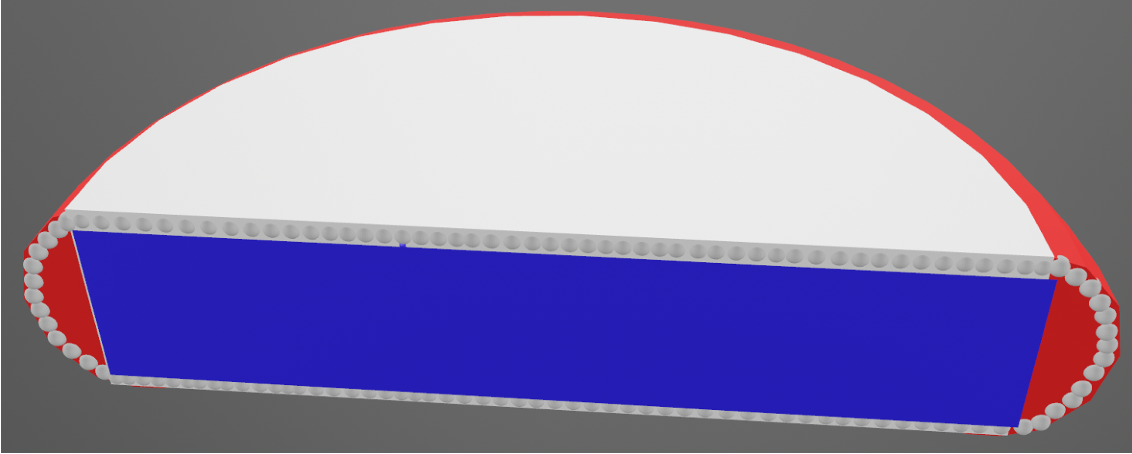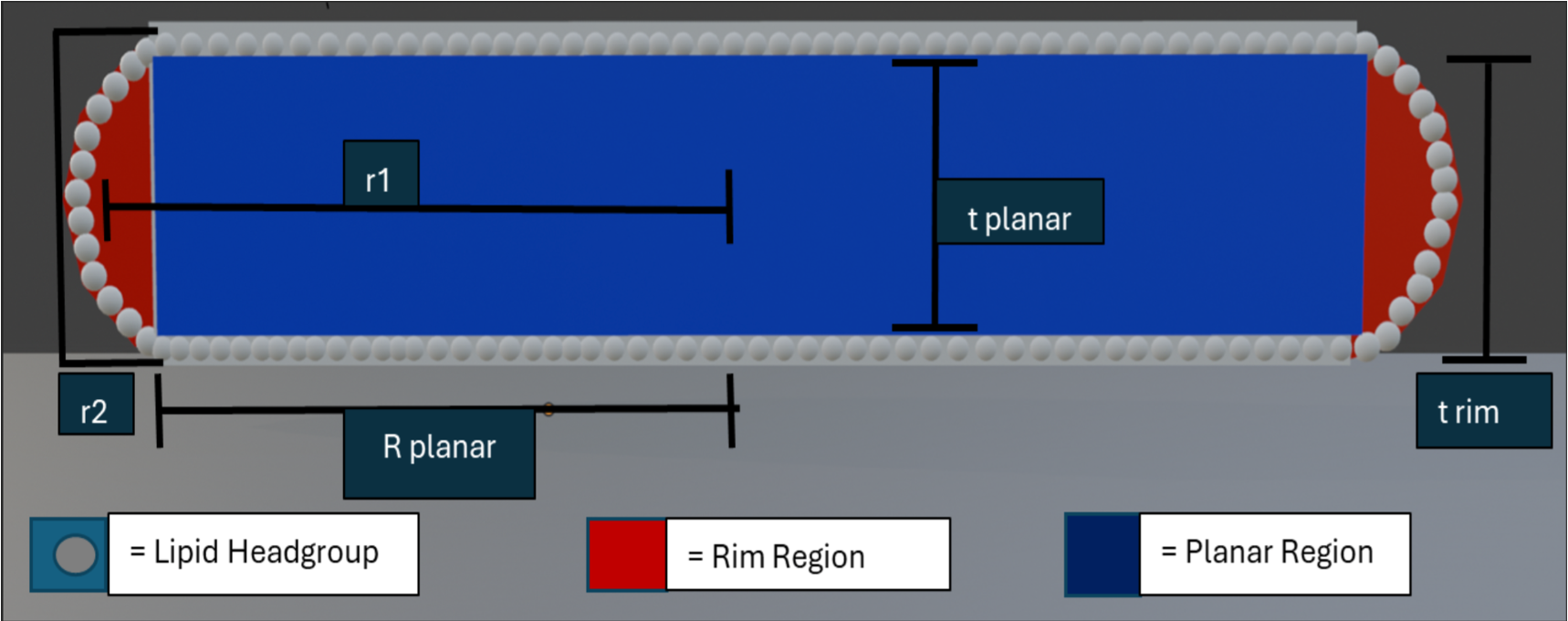
Figure 1

Figure 2

Team 8
Team Members |
Faculty Advisor |
Saurav Khodra |
Dr. Mu-Ping Nieh Sponsor Unsponsored Student Team |
sponsored by
Sponsor Image Not Available
Rational Design of Nanoparticles Based on A Thermodynamic Approach
Lipid nanodiscs are small, disc-shaped nanoparticles used in drug delivery and membrane protein research. They are formed through self-assembly of long-chain and short-chain phospholipids. The long-chain lipids like DPPC create a planar lipid region and short-chain lipids such as DHPC stabilize the curved rim. However, determining the correct lipid composition typically relies on trial-and-error, which increases cost, time, and material waste. To address this challenge, we developed a predictive model that estimates nanodisc structure based on molecular inputs and lipid ratios. Using known physical properties such as lipid volume, tail length, and headgroup area, the model calculates how lipids distribute between planar, rim, and solution phases. It also predicts disc geometry (radius, rim height), packing behavior, and partitioning trends. The model uses nonlinear optimization to satisfy key physical constraints such as mass and volume conservation, while minimizing unrealistic lipid distributions. By adjusting lipid ratios, the model simulates how disc size changes with composition. We evaluate consistency through partition coefficients, or in other words, if the ratio of lipid concentrations remains stable across different disc sizes, the system is thermodynamically sound. We validate our predictions by comparing model outputs such as disc geometry and lipid partitioning to experimental data reported in NMR and cryo-EM studies. This tool allows researchers to rationally design nanodiscs and reduce the need for trial and error. It provides a thermodynamically informed framework for optimizing lipid-based nanoparticle systems in both basic research and applied biomedical contexts.
